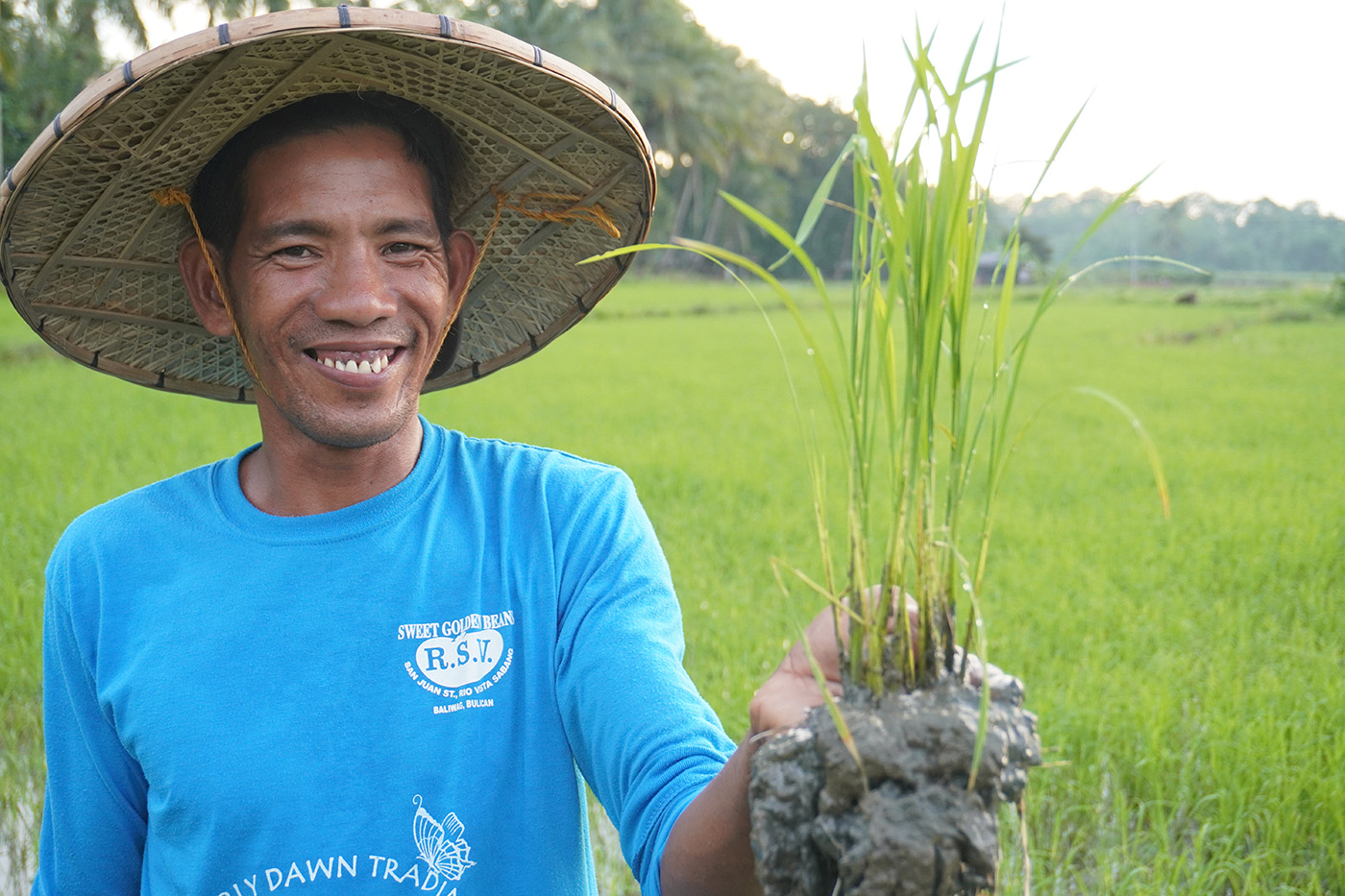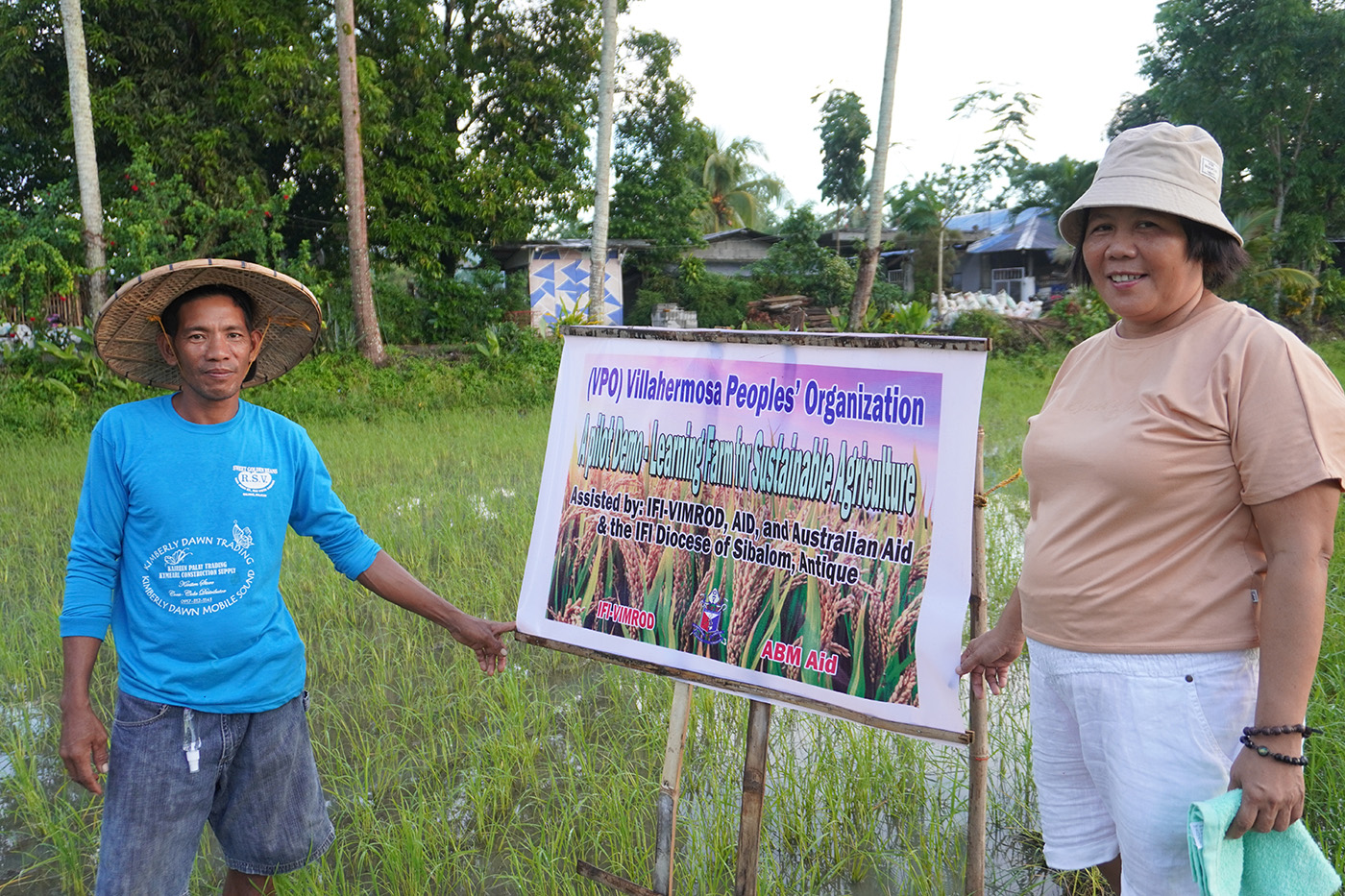These Philippines farmers grow hybrid rice organically…with success!
These Philippines farmers have successfully grown and reproduced hybrid rice using natural farming methods
In 2021, when naturally-grown hybrid rice was first introduced to the members of Villahermosa People’s Organisation (VPO) in Sibalom, Antique, in the Visayas region of the Philippines, they were understandably sceptical. Most people thought, “Growing hybrid rice varieties requires a package of commercial farm inputs to get a good harvest.” But is this true?
AID’s partner, IFI-VIMROD, knew well that sustainable agriculture entails a long, ongoing process of changing people’s attitudes and farming practices.
To encourage the people to embrace the new technology, VIMROD brought in a professor from Central Philippine University, College of Agriculture, in Iloilo City, Homer Deloso. Professor Deloso spoke to the people about natural fertilizers such as vermiculture (worm composting) and the fermenting of liquid fertilizers and their application to rice farms.
Initially, VPO was guided to establish a 1 metre by 7 metres plot for growing NSIC RC 222, a rice variety bred by International Rice Research Institute (IRRI) and released in 2010. The plot was treated with 1 kg vermicast and 3kg compost. The compost comprised readily available organic material such as Carabao or cow manure, chicken dung, madre de cacao leaves and other greens, and vegetable and fruit leftovers.
In only one month, people saw the difference. According to Lorlin D. Reyes, VPO chairperson, “the rice foliage was greener, each rice plant had more stems, and its panicles after three months produced about 180 to 200 grains.” This demonstration plot gave the organization 7 kilos of rice grain.
The following year, VPO increased the size of the trial to 60 square meters. This time, they reproduced the NSIC RC 216 (IRRI), a slightly different rice variety provided to them by the Philippines Department of Agriculture.
Since the expansion of the test farm has required more labor, the traditional Bayanihan system, or free collective work among VPO members, has been the key to this project.
Members collected data on the costs of inputs and the value of the yields. They found that, although the yields were the same (as when using synthetic farm inputs) using natural rather than synthetic farm inputs led to a 425 peso (about $12) increase in overall profitability for the 60-square-metre plot. This represents a saving on inputs of about 80%.
Key lessons learned:
- Moss formation is more likely to occur in soil that has been naturally applied. The moss will decompose as fertilizer.
- Greener foliage and stronger stems are resistant to pests. Even during harvest season, foliage is still green. Synthetic fertilisers, pesticides and herbicides make the rice wither easily and become susceptible to pests.
- Naturally grown rice has strong and long roots. This enables the plant to absorb more soil nutrients to support stronger stems and produce fully dense grains. People noticed that the stems are strong enough to withstand strong winds.
- Minimal weeds were found growing within the area.
- The number of grains per panicle is likely the same as rice applied with synthetic inputs, except that naturally grown rice provides about 98% fully dense grains, while the latter has about 85%.
Next steps:
- In April 2023, VPO established another 90 square meters. plot apart from the existing 60 sqm.
- At least 20% of the VPO members will apply the technology on their respective rice farms.
We have committed to contribute $1 for every $5 we receive from the Australian Government. This means that every donation you make to this project will be combined with funding from the Australian Government to reach more people. Your donation will allow us to extend this program.
–
AID wishes to thank all who support this project through prayer and/or donations.

VPO member, Rodel Sinapo, shows the organically-grown rice after one month. © IFI-VIMROD. Used with permission.
